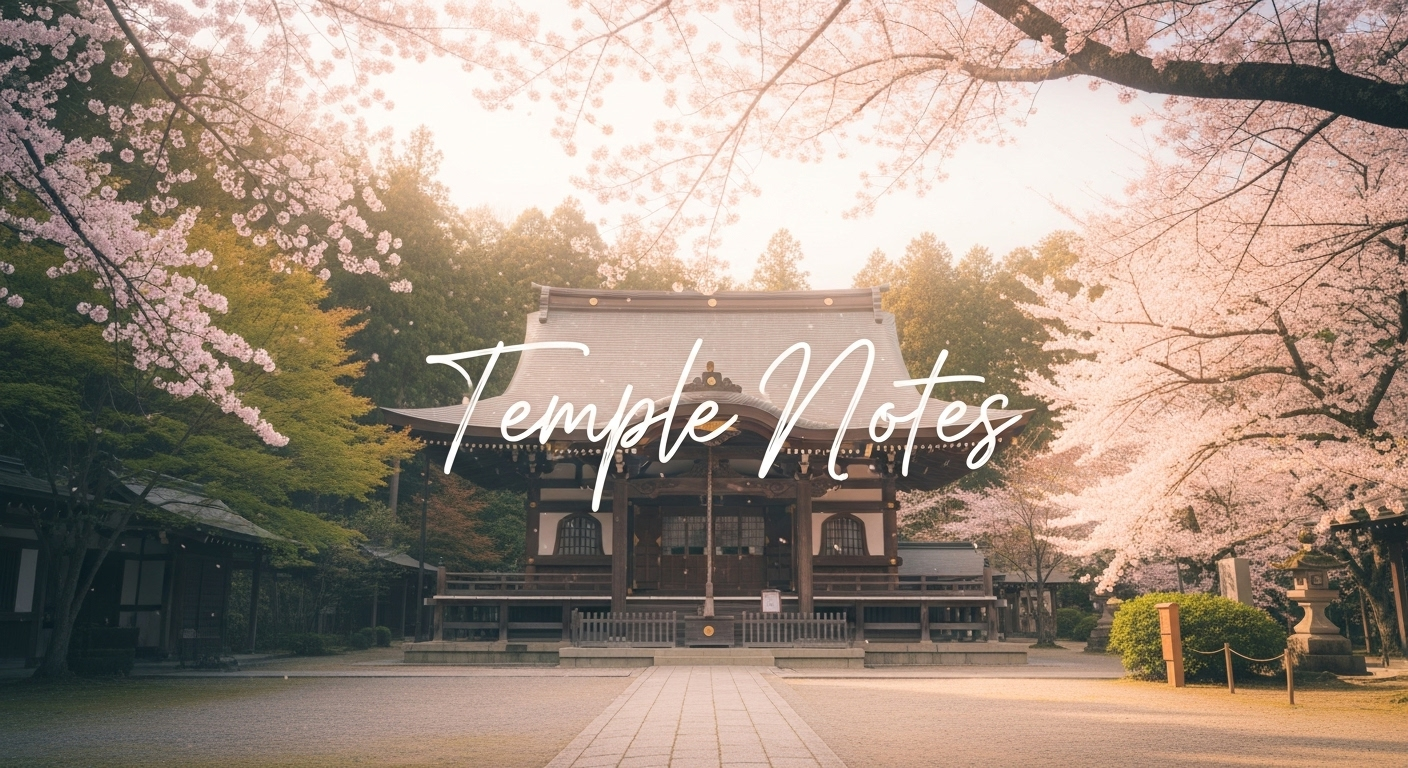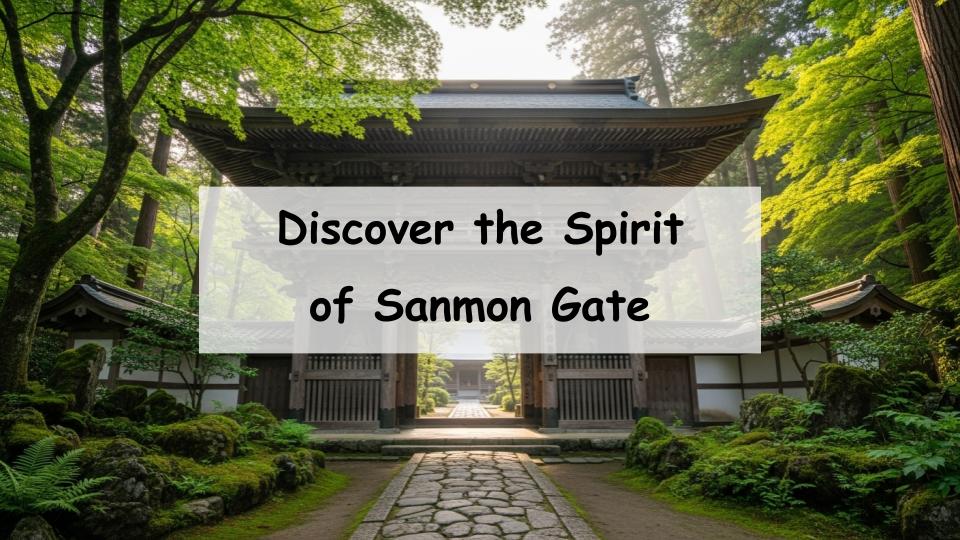Have you ever visited a temple and wondered, “What exactly is this big gate at the entrance?”
That gate is called a Sanmon, and it’s far more than just an entryway. It’s a symbolic structure that carries deep spiritual meaning and a rich history rooted in Buddhism.
In this article, we’ll explain what the Sanmon is, where it comes from, what it represents, and how to appreciate it when visiting temples. In just three minutes, you’ll gain new insights that can make your next temple visit more meaningful and enjoyable.
- What Is the Sanmon? The Deeper Meaning Behind the Temple Entrance
- The History and Development of the Sanmon
- How Is the Sanmon Different from Other Temple Gates?
- Famous Sanmon Gates Across Japan Worth Seeing
- Helpful Tips and Insights Before Visiting a Temple
- Conclusion: Understanding the Sanmon Deepens Your Temple Experience
- A Message from the Guide
What Is the Sanmon? The Deeper Meaning Behind the Temple Entrance
How to Read “Sanmon” and What It Means
“Sanmon” is read as san-mon, often written as “山門” (literally, “mountain gate”) in Japanese. It refers to the main gate at the front of a temple, and it serves not only as a physical entrance but also as a spiritual threshold separating the sacred from the secular world.
Passing through the Sanmon signifies preparing one’s mind and body to engage with the Buddha’s teachings. It’s a moment of transition—a quiet ritual of leaving the everyday behind.
Why Is It Called “Sanmon”? Origins in Buddhist Philosophy
The word Sanmon literally means “Three Gates.” These gates represent three aspects of spiritual liberation in Buddhism: the Gate of Emptiness (kūmon), the Gate of Signlessness (musōmon), and the Gate of Wishlessness (muganmon).
These are not three literal gates, but symbolic paths toward enlightenment. They remind visitors of the mental and spiritual purification necessary to approach Buddhist teachings with sincerity.
The Role of the Sanmon in Temples
Beyond its function as an entrance, the Sanmon acts as a spiritual checkpoint. It encourages visitors to pause, reflect, and enter the temple grounds with mindfulness and respect.
It also symbolizes the temple’s stature and spiritual depth. Often grand and ornately decorated, the Sanmon reflects the temple’s heritage, sect, and values.
The History and Development of the Sanmon
Where Did the Sanmon Originate?
The concept of temple gates originated in ancient Indian Buddhist architecture, where gates marked the boundary of sacred space. This practice was carried over to China and later to Japan.
In Japan, the Sanmon became established during the Nara and Heian periods, with its spiritual symbolism becoming especially prominent during the Kamakura era with the rise of Zen Buddhism.
Changes and Features Through the Ages
Early Sanmon gates were simple structures, but over time, they evolved. By the Kamakura and Muromachi periods, two-story gates became common, and in the Edo period, decorative elements like carvings and paintings were added.
Each period added its own characteristics, reflecting changes in religious practice and architectural innovation.
Famous Architectural Styles of Sanmon Gates
The Sanmon at Nanzen-ji Temple in Kyoto is one of the most famous, built in a massive two-story style known as gōmon. Other notable examples include Kenchō-ji in Kamakura and Tōfuku-ji in Kyoto.
Each gate tells a story—through its proportions, carvings, and layout—making it an essential feature for temple architecture enthusiasts.
How Is the Sanmon Different from Other Temple Gates?
Difference Between Sanmon, Chūmon, and Other Gates
While “Sanmon” and “Sangate” (山門) are often used interchangeably, they both refer to the main temple gate. In contrast, gates like chūmon (middle gate) appear deeper within the temple grounds, usually leading to the main hall.
The Sanmon, being the outermost and most prominent, is the temple’s primary symbolic and architectural gateway.
The Symbolic Meaning of the Sanmon
The Sanmon is not just a gateway—it’s a ritual of entry. It symbolizes stepping away from worldly distractions and preparing to receive the Dharma (Buddha’s teachings).
It also reflects the temple’s identity, including its religious affiliation and the level of spiritual training it offers.
Famous Sanmon Gates Across Japan Worth Seeing
3 Must-See Temples with Impressive Sanmon Gates
Nanzen-ji in Kyoto has one of Japan’s most iconic Sanmon gates, often referenced in literature and kabuki. Kenchō-ji in Kamakura features a towering gate that commands respect, and Eihei-ji in Fukui offers a more austere but spiritually powerful version.
These sites are popular with both tourists and spiritual seekers for their architectural beauty and serene ambiance.
Unique Structures and Decorative Details
Some Sanmon gates feature intricate carvings, vivid colors, and multi-tiered roofs. These elements often depict Buddhist legends or protective deities.
Exploring these features can enhance your appreciation of the temple’s artistry and spiritual intent.
Helpful Tips and Insights Before Visiting a Temple
Proper Etiquette When Passing Through a Sanmon
Before entering a temple, it’s customary to bow slightly in front of the Sanmon as a sign of respect. Traditionally, the central path is reserved for monks or ceremonial use, so general visitors should use the sides.
Being mindful of such etiquette shows reverence and enhances your spiritual experience.
The Deeper Buddhist Meaning Behind the Gate
The Sanmon symbolizes the “Three Gates of Liberation,” encouraging visitors to let go of worldly attachments and approach the sacred space with humility.
Understanding this meaning adds depth to the act of simply walking through the gate—it becomes a conscious step on the path to inner peace.
Conclusion: Understanding the Sanmon Deepens Your Temple Experience
A New Way to See Temples
Knowing the meaning and history of the Sanmon transforms your temple visit from a sightseeing activity into a reflective journey. You’ll start to notice its structure, symbols, and spiritual function with new eyes.
This deeper understanding brings a new level of connection with both the temple and its teachings.
Enriching Your Perspective on Buddhism
The Sanmon serves as a bridge between the outside world and the spiritual realm. By learning about its origins and purpose, you not only appreciate temple architecture but also grasp core concepts of Buddhist thought.
Next time you visit a temple, let the Sanmon be more than a gateway—it can be a moment of spiritual awakening.
A Message from the Guide

I remember being overwhelmed by the Sanmon gate at Kenchō-ji, even though I had no knowledge about it at the time.








Comment